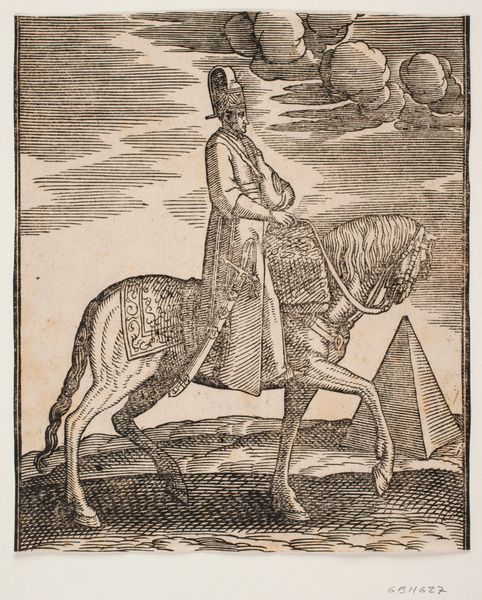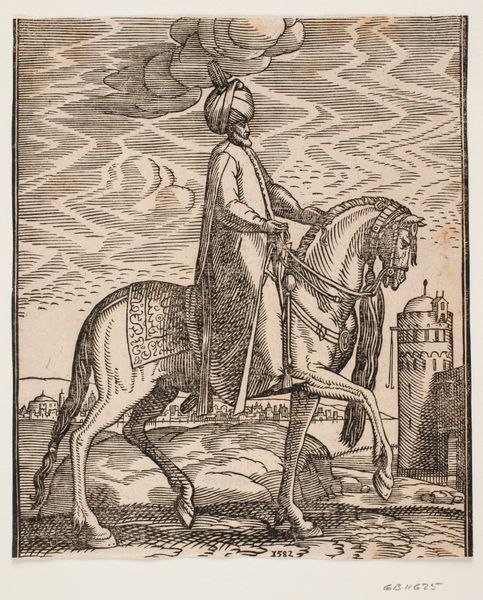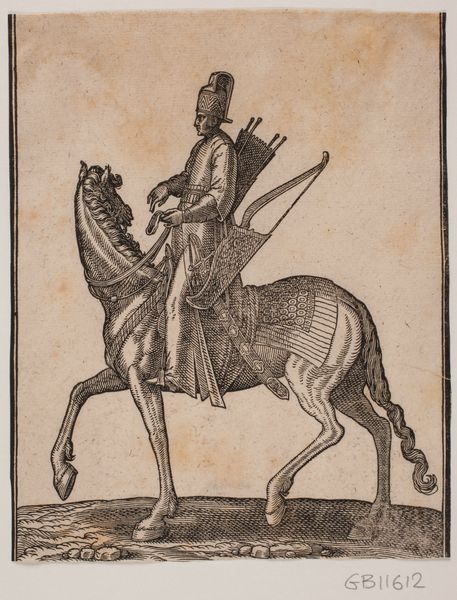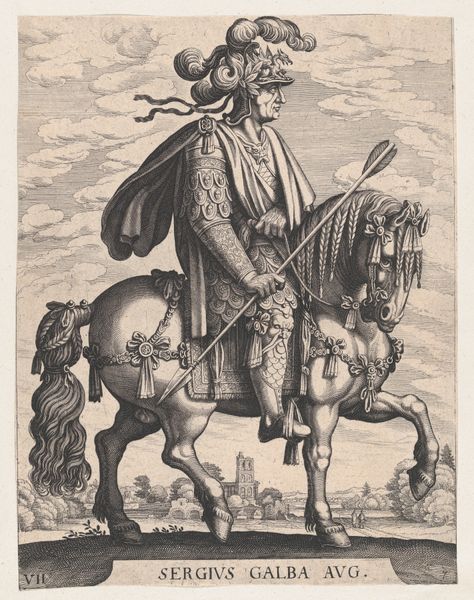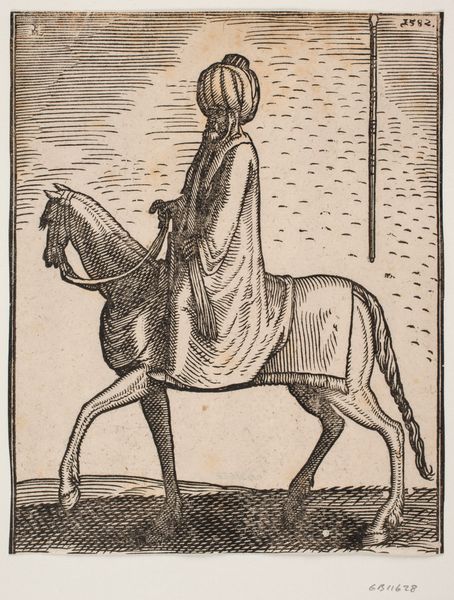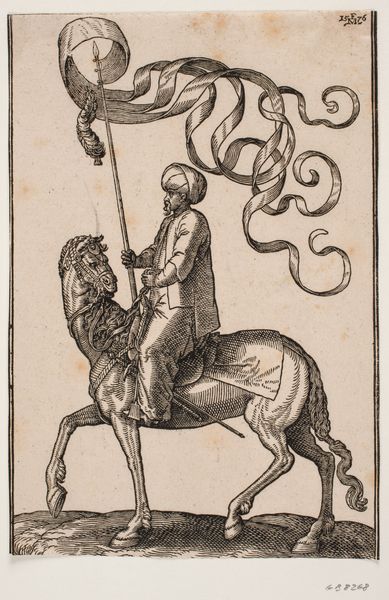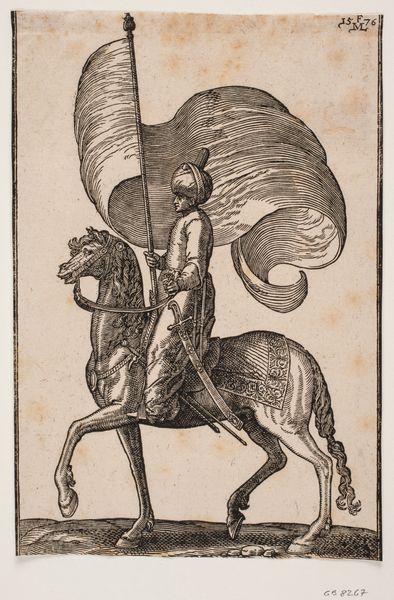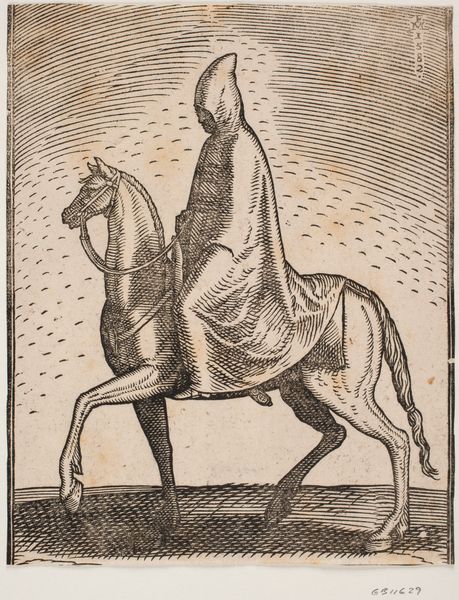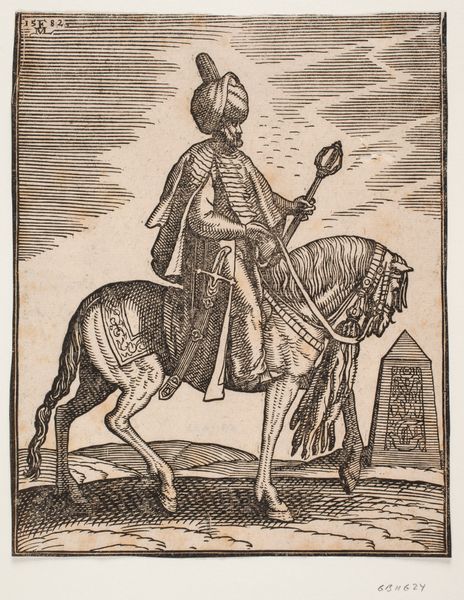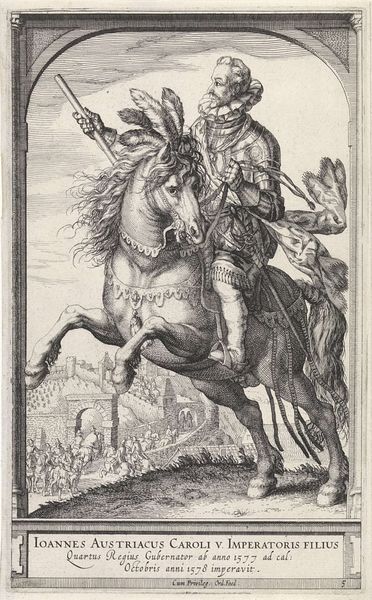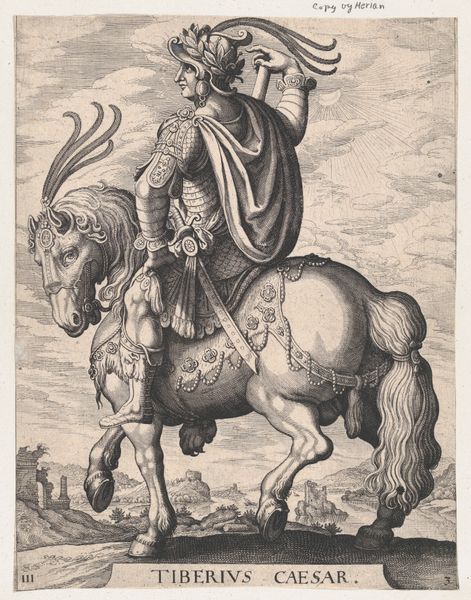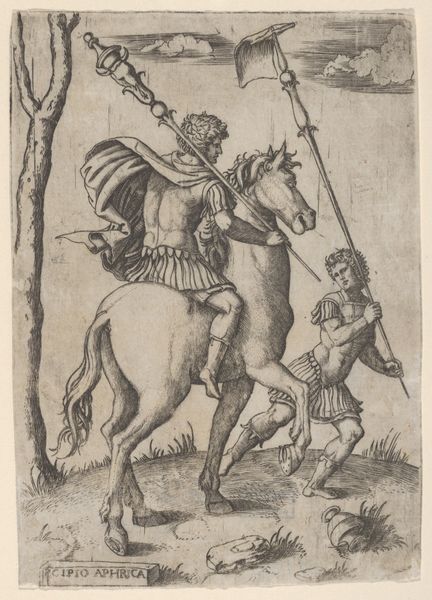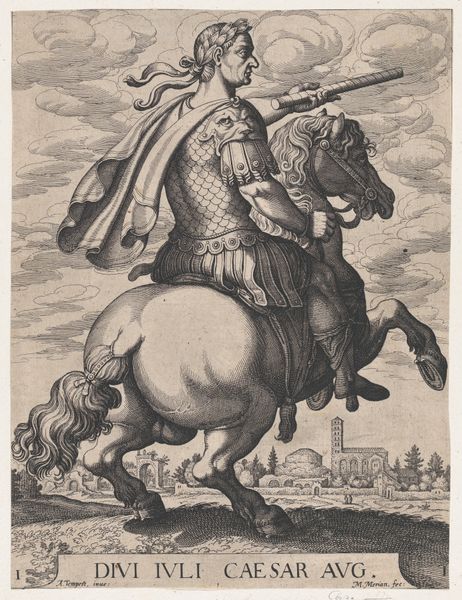
Turban-clad rider, with a sword at his right side, profile towards the right; between the horse's forelegs, two pyramids come into view 1582
0:00
0:00
drawing, print, ink, woodcut
#
portrait
#
drawing
#
ink drawing
#
narrative-art
# print
#
landscape
#
figuration
#
ink
#
geometric
#
ancient-mediterranean
#
woodcut
#
line
#
pen work
#
islamic-art
Dimensions: 188 mm (height) x 167 mm (width) (bladmaal)
This print, Turban-clad rider, was made in 1582 by Melchior Lorck. It's a woodcut, meaning the artist carved the image into a block of wood. Ink was then applied to the raised surface and printed onto paper. The stark contrast comes from the directness of the medium. Lines are either there or not, demanding a clear decision with each cut. Look at the way Lorck used parallel lines to create shadows, and denser clusters to suggest texture, especially on the horse's head and the rider's turban. Woodcut is not exactly an industrial process, but it allowed for relatively quick reproduction and distribution of images, important in a time before photography. This image speaks to European interests in the "Orient," a region increasingly accessible through trade and travel. The pyramids in the background are an obvious reference to this context. Considering the material and its history reminds us that images like this weren't just about artistic expression, but also about circulating ideas and shaping perceptions of other cultures.
Comments
No comments
Be the first to comment and join the conversation on the ultimate creative platform.
